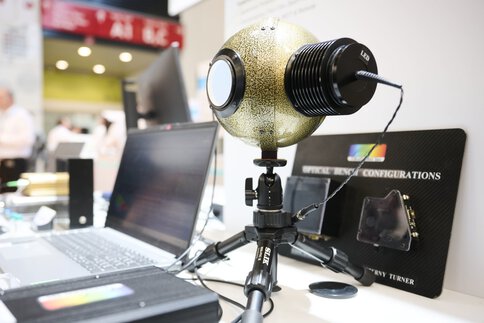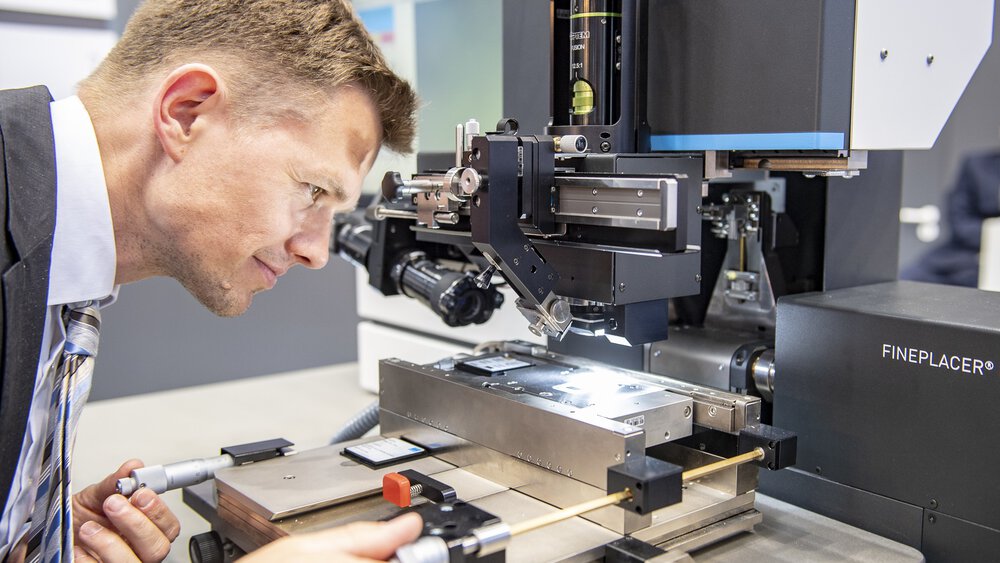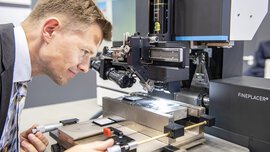Photonics and optoelectronics—today’s and tomorrow’s cutting-edge technology
Experience how light is driving innovation: Optoelectronics and laser technology have become indispensable in numerous industries today—whether in medical technology, industry, or telecommunications. Discover the rapid development of a billion-dollar market, exciting applications, and the latest trends. The leading minds in the industry meet at Laser World of Photonics – experience the latest technologies, make valuable contacts, and actively shape the future of photonics!
Optoelectronics – laser technology as a key technology
Photonics and optoelectronics are the key technologies of the future.
Optoelectronics and laser technology are closely linked because they both deal with the targeted use of light – but with different focuses that complement each other perfectly:
- Optoelectronics focuses on components that convert light and electricity into each other – including a host of laser systems. Laser diodes, a key component of modern laser technology, are typical optoelectronic components: They convert electrical energy directly into coherent laser light.
- Laser technology deals with the generation, amplification and application of laser light. A laser is a highly specialized light source that generates extremely focused, monochromatic and coherent light.

There are many common application errors in laser technology: when playing electronic storage media such as Blu-ray discs, when reading barcodes using corresponding readers, when used as an important tool in cutting and welding processes for mechanical engineering or mechatronics applications or even in the expansive field of testing and measuring technology based on optical sensors.
But the application areas of photonics are not limited to entertainment and industry; they are far more diverse than most people would think: There is hardly any industry that does not currently benefit from this innovative technology and for which laser-based processes and methods are not of great significance. Tapping into this enormous potential requires suitable optoelectronics: sophisticated ultra-high-precision components needed for well-designed laser processes.

Optoelectronics and laser technology in use: industry overview
Optoelectronics and laser technology are key technologies that have become indispensable in numerous industries. They enable precise applications and innovative products, and drive technological developments worldwide. They are used particularly frequently in the following areas:- Medical technology and healthcare (e.g. laser surgery, imaging)
- Industry and manufacturing (e.g. laser cutting, 3D printing)
- Telecommunications and IT (e.g. fiber optic communication, photonic chips)
- Automotive industry and mobility (e.g. LIDAR for autonomous driving)
- Aerospace (e.g. laser communication, remote sensing)
- Defense and security technology (e.g. laser-based surveillance and drone defense)
- Energy technology and energy generation (e.g. solar energy, nuclear fusion research)
- Science and research (e.g. quantum optics, materials research)
Growth market optoelectronics: innovations and impressive figures
The laser-optical applications within the photonics market generate a global annual turnover of more than 355 billion euros. There are more than 5,000 laser technology companies with more than 350,000 employees in Europe alone. Technical development in the photonics sector keeps progressing rapidly and further growth is to be expected. New beam sources, innovative optomechanical system components and ever more advanced applications are continuously developed and marketed. That also applies to the necessary optoelectronics technology.










Laser World of Photonics—the trade fair for lasers and optoelectronics
Lasers along with their components and control systems are a key technology of the future and have been an integral part of Laser World of World of Photonics from the very beginning. The world’s largest trade fair for lasers and photonics in Munich is the best place to gather information on latest developments, innovative applications and necessary control software and to meet leading manufacturers and service providers in the field of photonics and optoelectronics.
Exhibitor directory
The Laser World of Photonics exhibitor list is ideal for looking up specific information on any exhibitor.
Product index of Laser World of Photonics
The PDF documentLaser World of Photonics product index is a helpful range of exhibits according to product groups covering, among others, the following areas:
- Beam sources
- System components
- Laser components
- Safety/protection against laser radiation
- Optoelectronics and optomechanics
- Software
Experience optoelectronics in all its diversity at Laser World of Photonics!
Discover proven applications and the latest innovations in lighting and optoelectronics up close. Laser World of Photonics is the central meeting place for everyone who wants to keep their finger on the pulse of the industry: This is where the key players come together, discuss the latest developments and make valuable contacts. Take this unique opportunity to expand your knowledge, gather inspiration and significantly expand your network!
